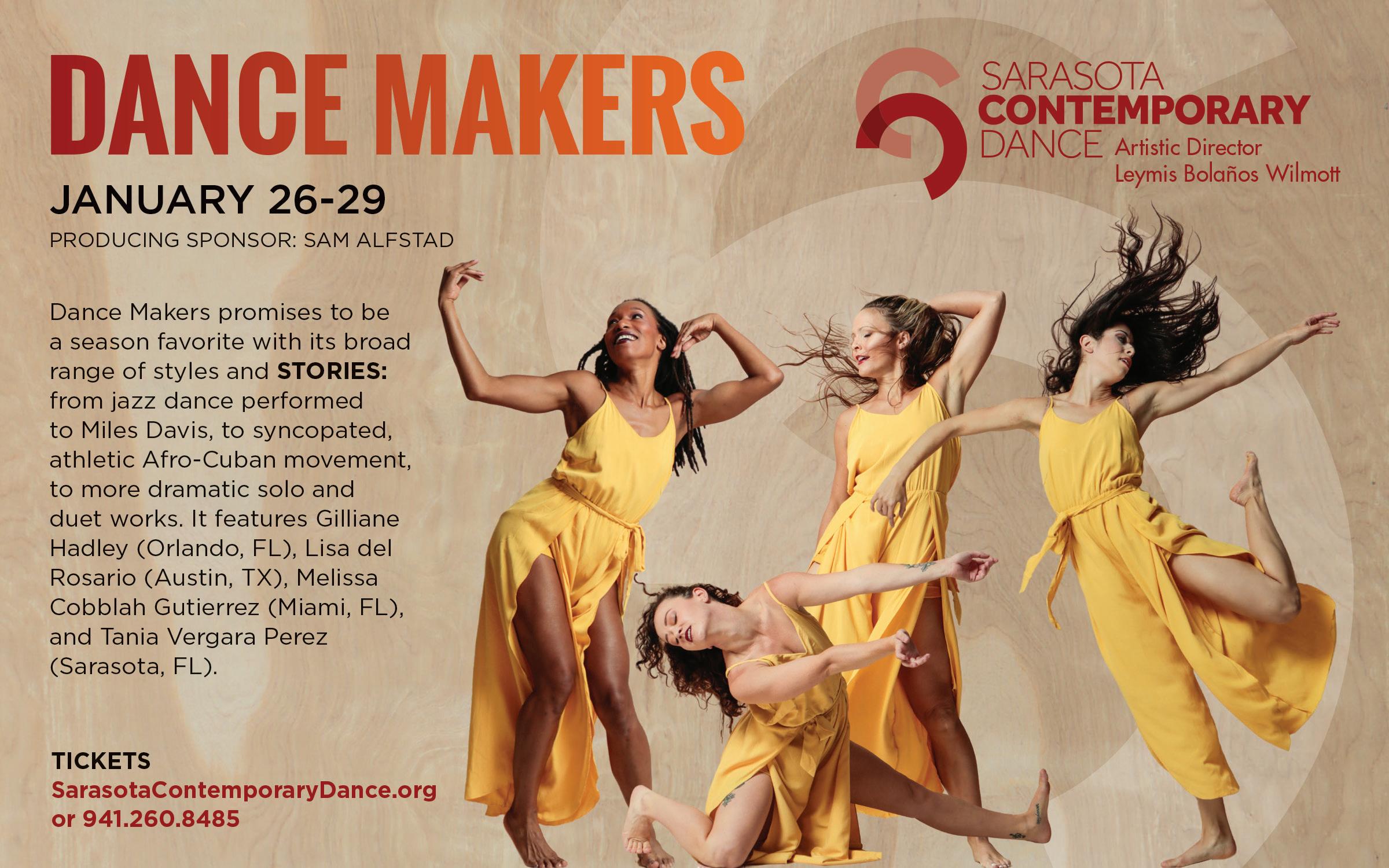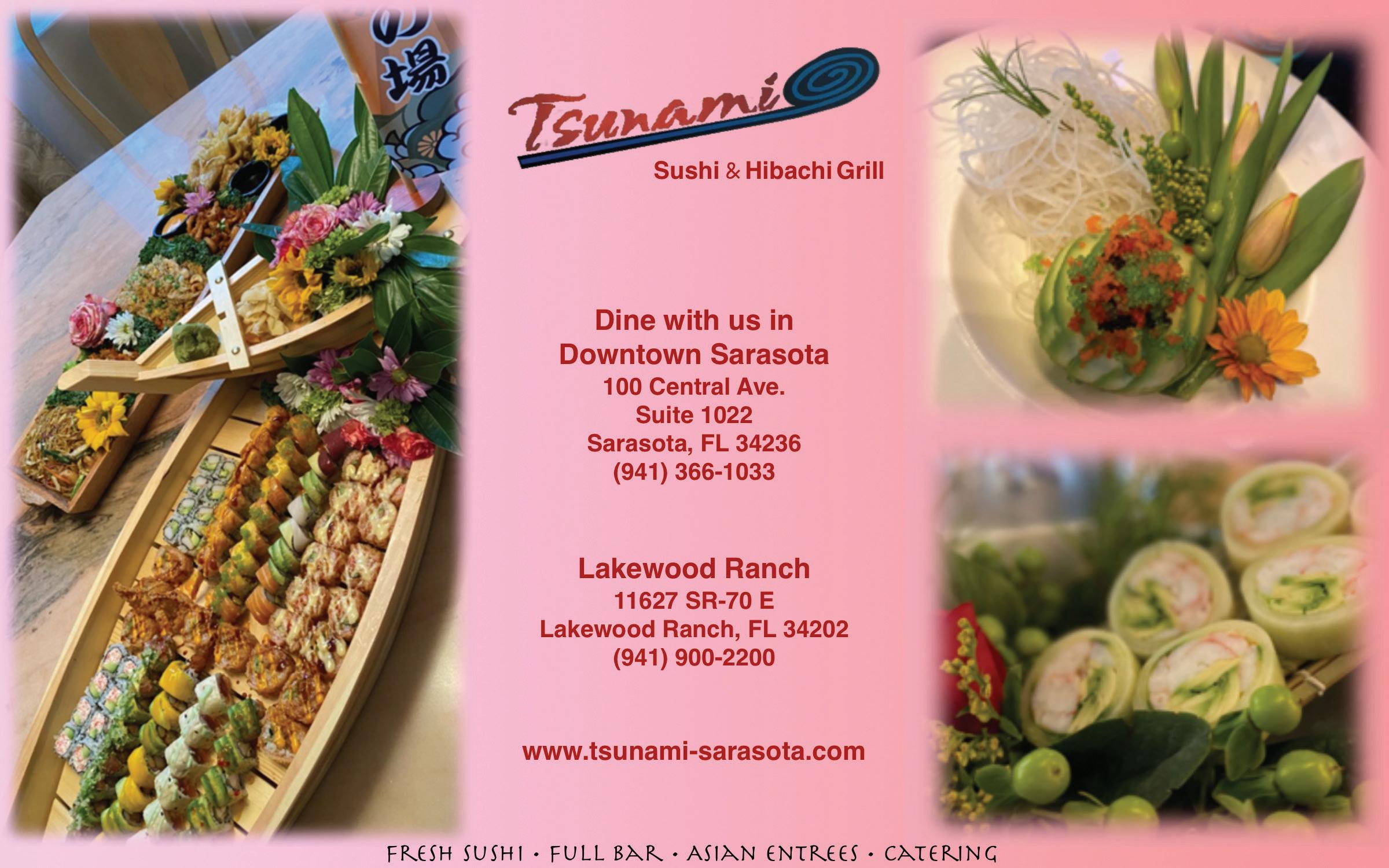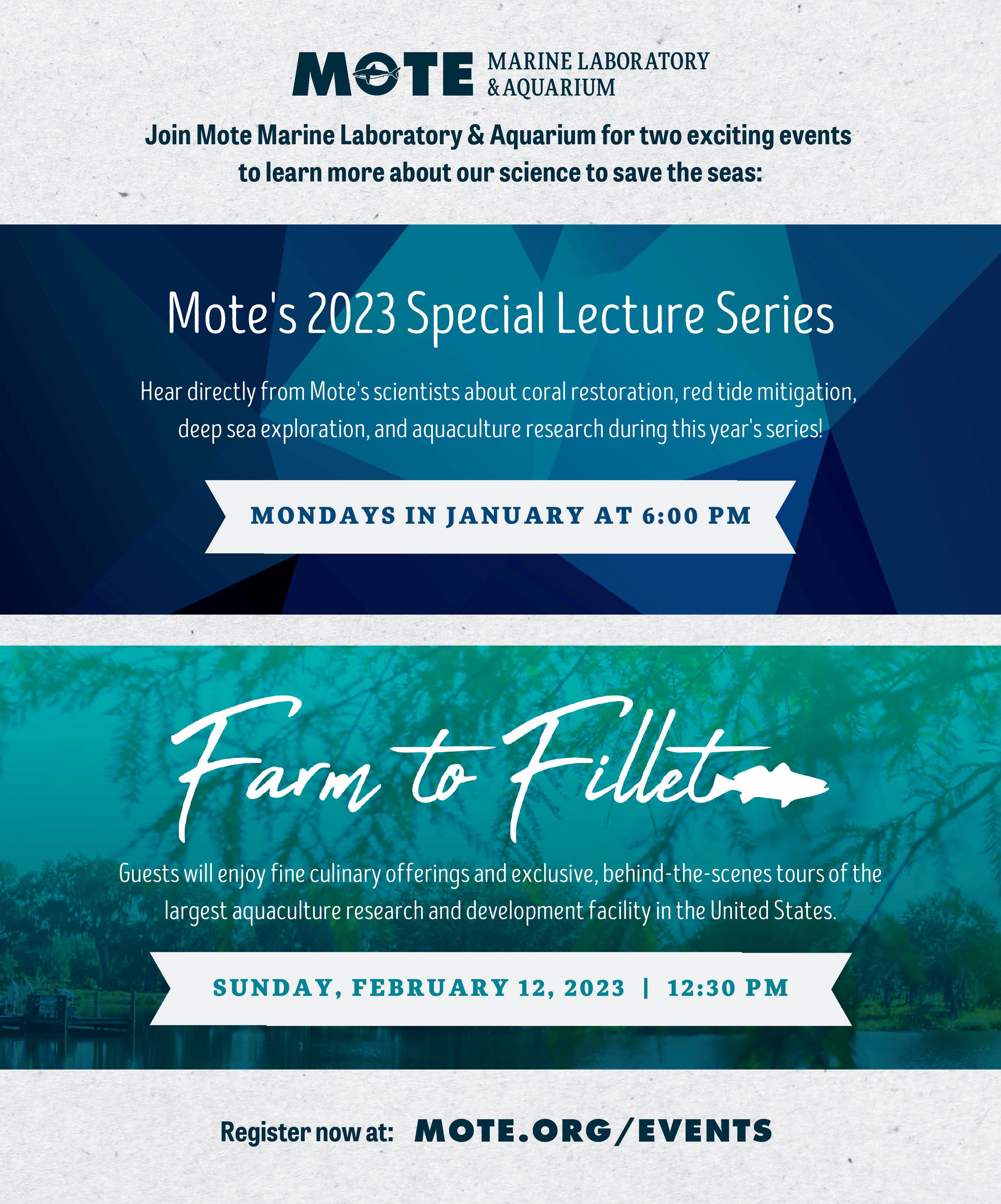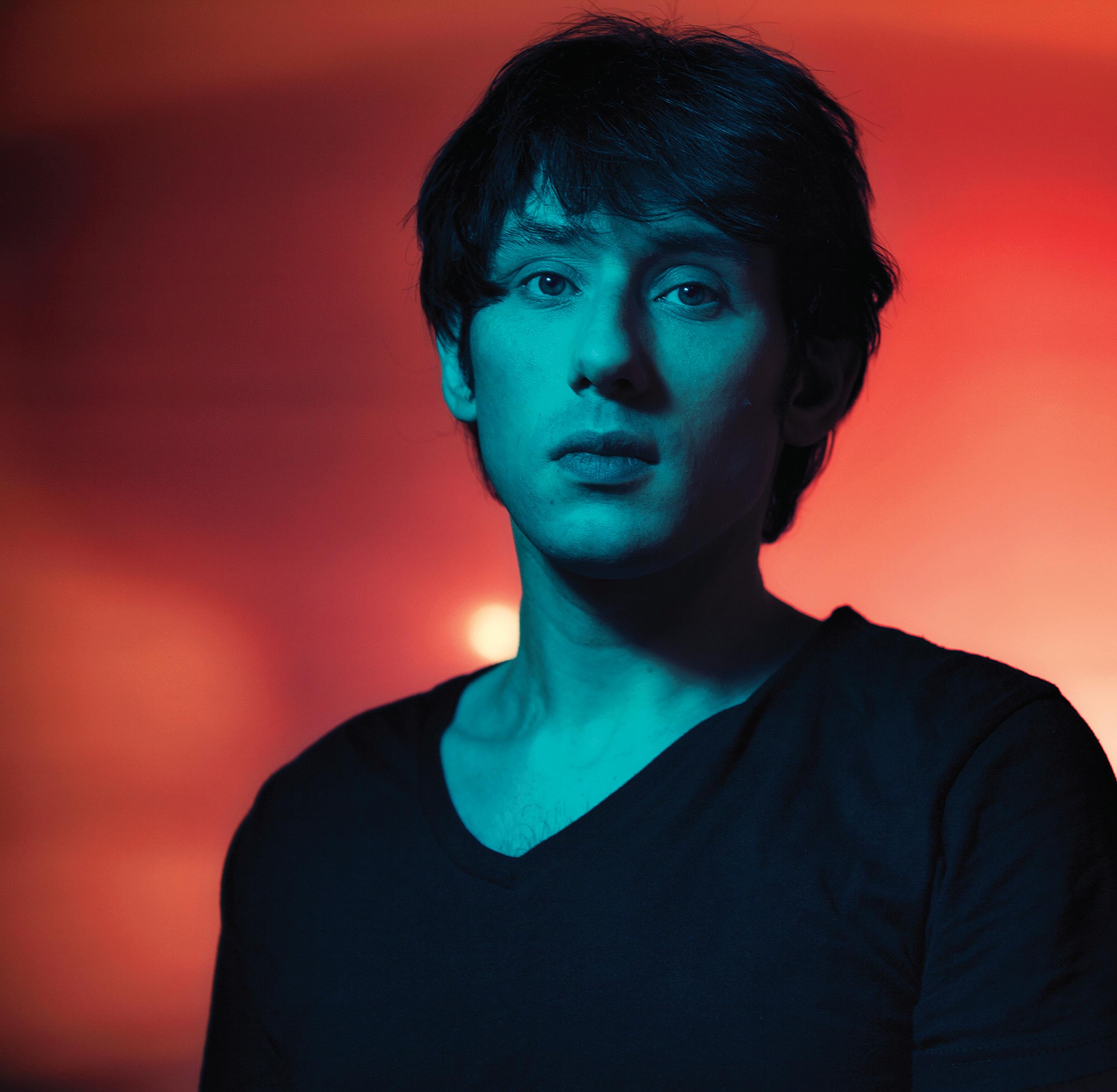
15 minute read
culture city
RINGLING RENAISSANCE
cutting-edge artists gather at the ringling’s historic asolo theatre to celebrate
their craft. Dylan Campbell
This page: Backed by his eclectic ensemble, Joseph Keckler’s singular talent lights the HAT aflame in his Sarasota premiere. Keckler’s sublime brand of performance ranges from operatic vocals to comedic musings to short films in which his bizarrely heroic quotidian plots become legendary and virtuosic in their recounting.

“WHEN YOU COME IN TO SEE A SHOW, it’s almost like you’ve seen a festival that’s been stretched out over the course of eight months. You walk away from it with this encyclopedia of really interesting things that you’ve experienced,” says Elizabeth Doud of The Ringling’s Art of Performance Program at the Historic Asolo Theatre. “Our season typically runs from October through April and features a diverse mix of 11 to 12 shows. While there are threads that connect them, they’re purposefully not all thematically connected–I don’t know if that would serve our generationally and culturally diverse community.”
Cultivating such an environment, for some, would be a tall ask. But for Doud, The Ringling’s ConnieKuhlman Curator of Performance, it’s just another day in the office. Since stepping into the role in 2019, she has become the driving force behind the biggest oxymoron in the Sarasota art scene. For in a region as densely saturated with theatrical programming as the Gulf Coast, the bowels of an 18th century Italian opera house would be the last place one would expect to find some of the most avant-garde, cutting-edge acts of the performing arts. Yet here they congregate, from Brazilian dance troupes to experimental theater companies to contemporary jazz musicians, to perform in the reconstructed remains of a 224-year-old relic. Operating in the shadow of the city’s most prestigious arts organization, the Historic Asolo Theatre—now dubbed the HAT—has become the little theater that could, a pivotal piece of the Sarasota arts ecosystem.
How? Programming—specifically through the Art of Performance series. “My methodology as a curator or programmer is always to first look at the local arts ecology and think about offering something that isn’t currently being offered, so that we are filling a niche that isn’t currently occupied because there’s so many other thriving arts organizations here that are doing excellent work,” says Doud. “For example, Asolo Repertory Theatre is right across the street. They do very high quality repertory theater and musical theater. We wouldn’t try and reproduce that because we already have a neighbor that’s doing that really well. The same can be said for the Opera and a lot of other organizations all doing excellent work with classical, orchestral music. Trying to replicate that probably isn’t the best move for us.”
The Historic Asolo Theatre’s ability to fill that niche was the result of a pivotal decision made by The Ringling in 2017, when the organization decided to end the run of the renowned annual Ringling International Arts Festival (RIAF), reframing its approach to the performing arts. Instead of hosting up
culture city
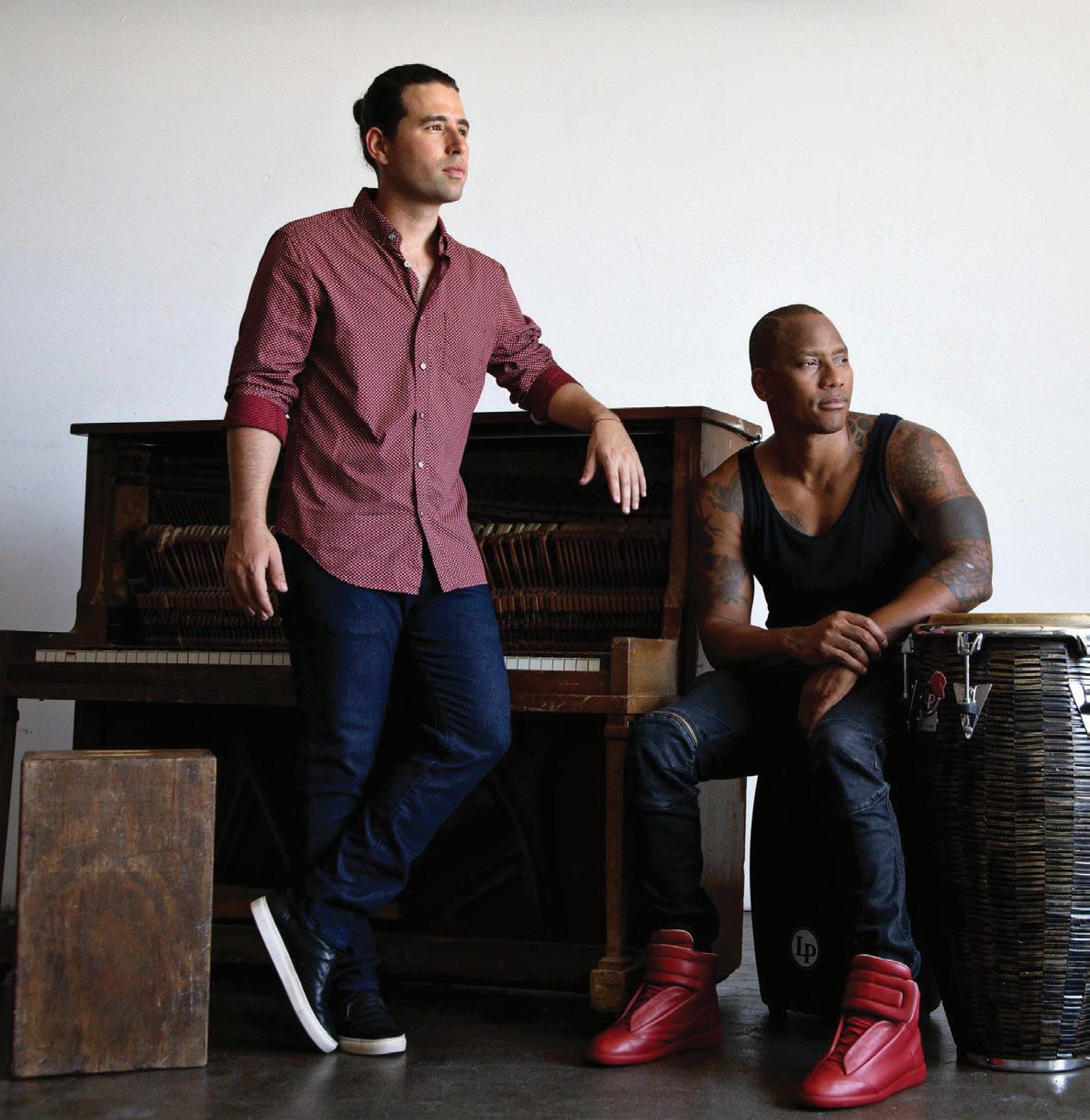
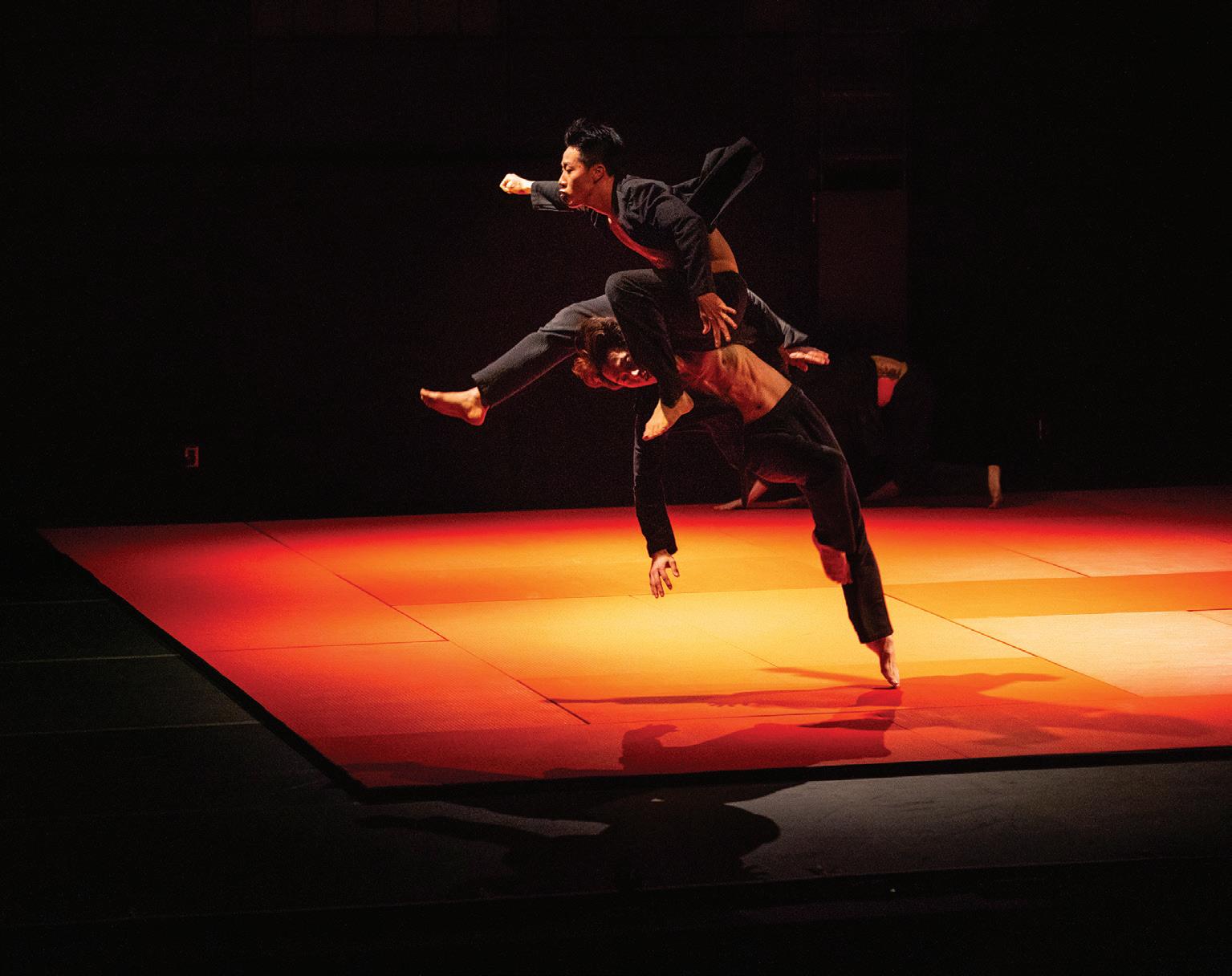
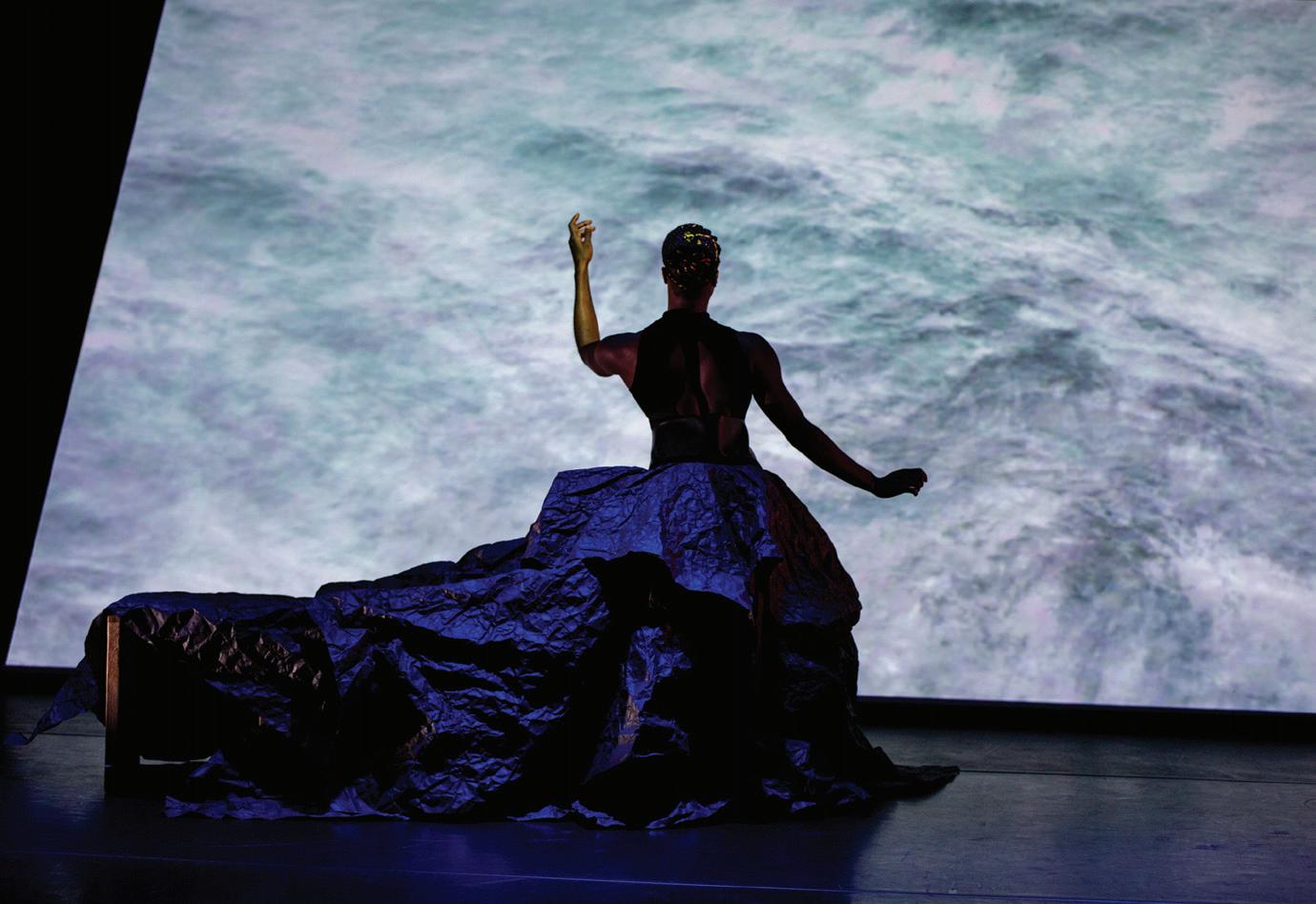
to 11 various productions over three days in October, the organization opted to spread out its presentation of international, contemporary, and unique acts over an entire year—deepening its relationships with the artists and granting more time for audience members to experience each performance. “In the spirit of the Ringling International Arts Festival, which was such a breath of fresh air and brought in some very high quality, unique, artists on the vanguard, we’ve wanted to continue to bring in artists that are a little more experimental and international in scope,” says Doud. “I think we’re one of the few presenters in the city that are bringing this many international artists. About 65% of this season is going to feature artists from outside of the United States.”
Restructuring the Art of Performance series over the calendar year also allowed The Ringling to provide further community engagement for its audience. Workshops, classes, and lectures with visiting artists have now become commonplace, built into the contracts of the visiting artists. “While RIAF was this spectacular, intense, multidisciplinary festival, it didn’t lend itself toward community engagement. In a festival environment, it’s actually really hard to carve out the time that you need to do a class or to organize student groups,” says Doud. “Now, when we have artists come to Sarasota, we ask them to come in a couple days early so they have time to do their technical setup in addition to providing some kind of interactive program with our community – whether it’s a workshop, a masterclass, an artist talk, or a visit to a local school. We negotiate that into the contract so that the artists get paid for their time, but we can offer it to the community for free. It’s one of my favorite things that we do.” SRQ Historic Asolo Theatre at The Ringling Museum, 5401 Bay Shore Rd, Sarasota, 941- 360-7399, ringling.org/historic-asolo-theater.

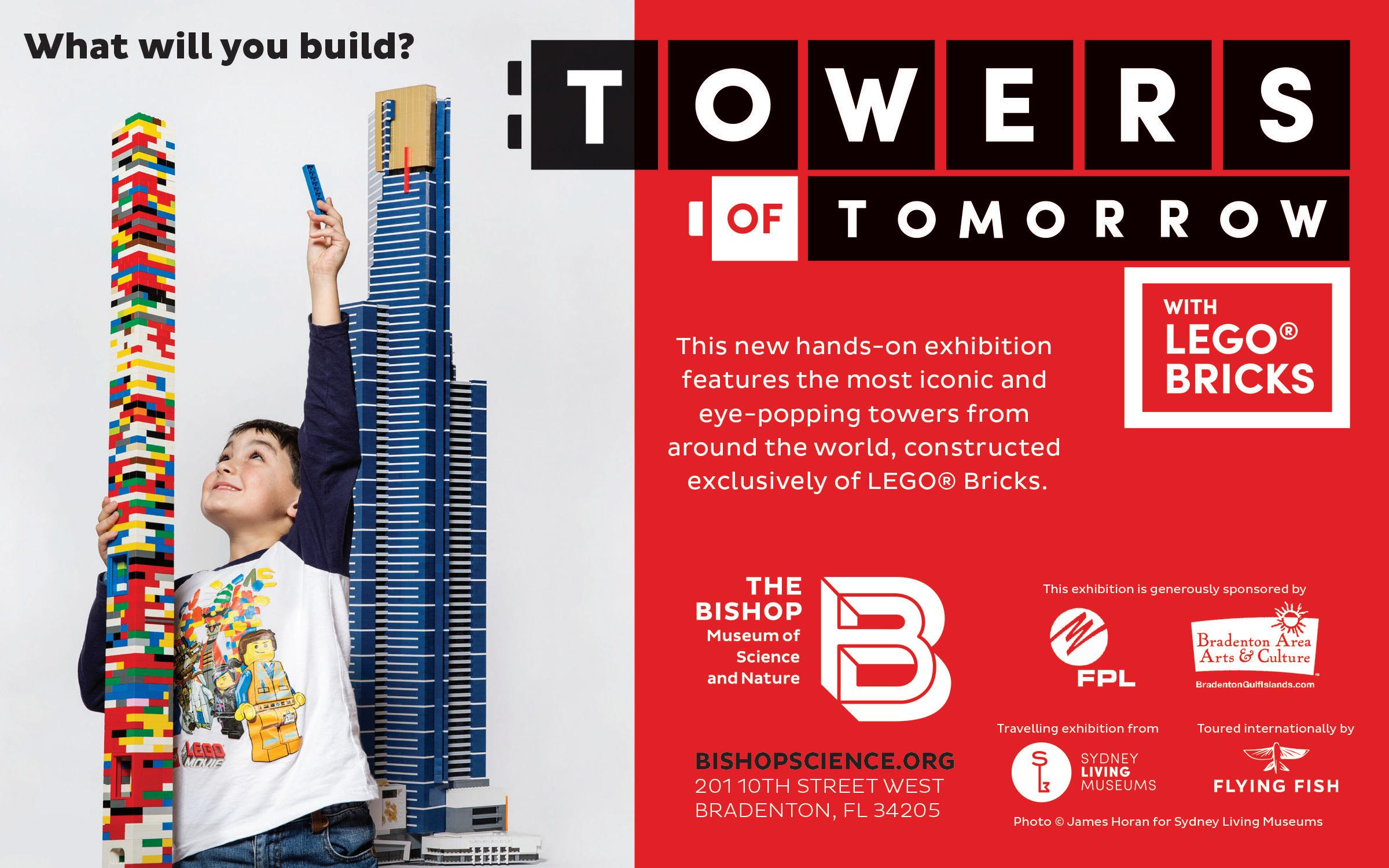
culture city
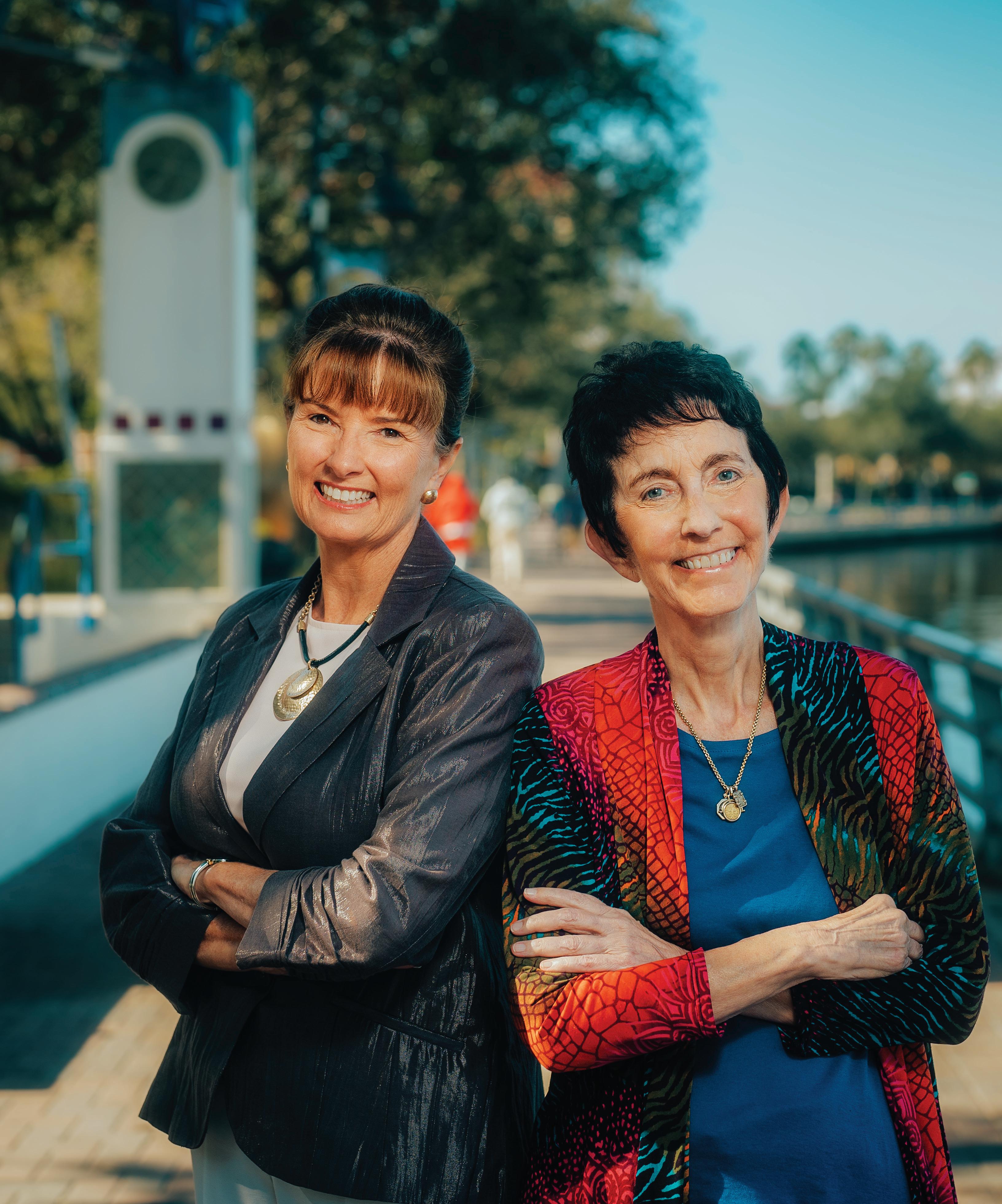
One Look Back, Two Steps Forward
Johnette Isham and Karen Corbin take us through the history and the future of the nonprofit organization Realize Bradenton.
Interview by Dylan Campbell | Photography by Wyatt Kostygan
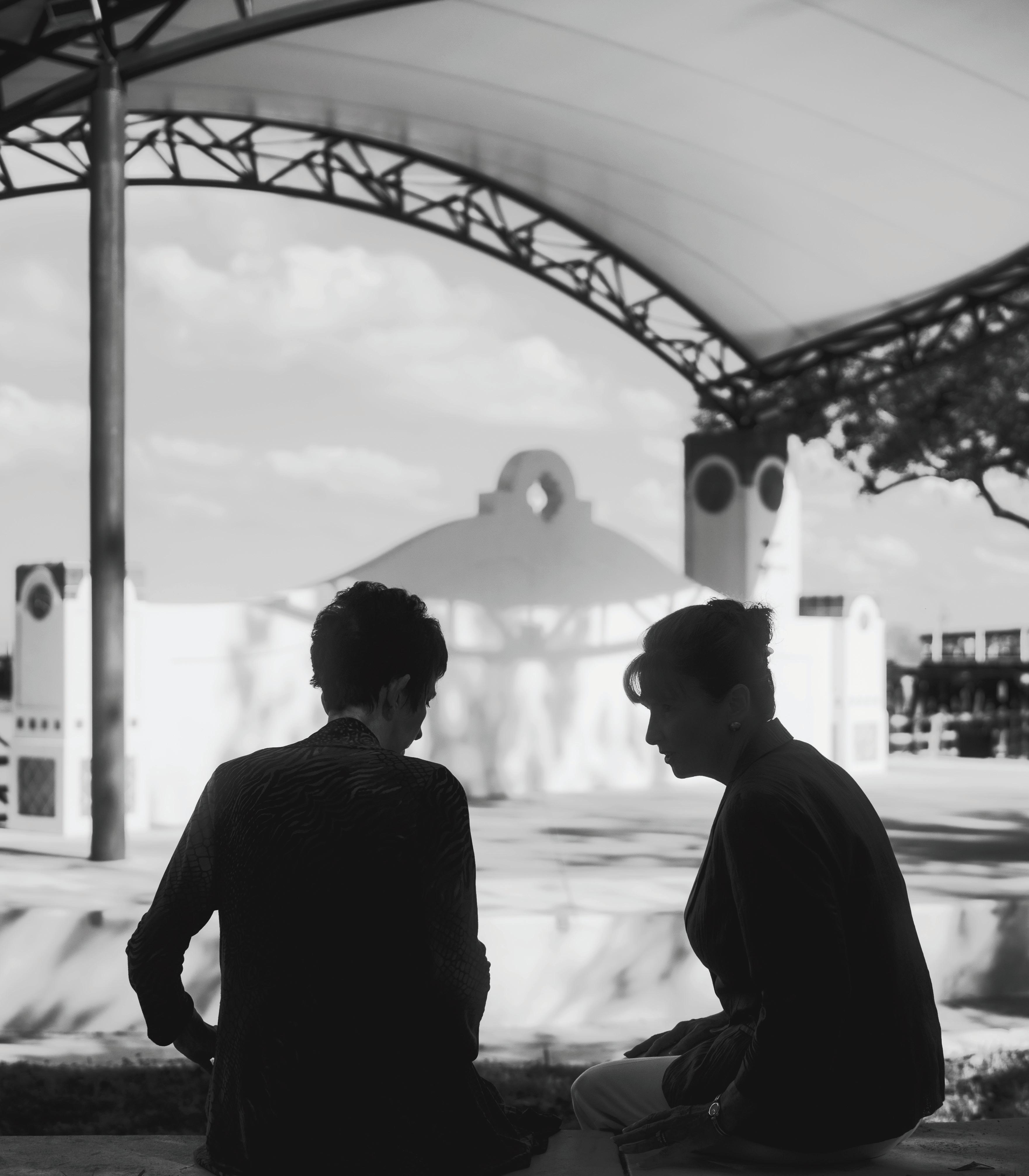
SRQ | JOHNETTE, COULD YOU TAKE US BACK ONTO THE ORIGIN STORY OF REALIZE BRADENTON AND HOW IT CAME TO BE? JOHNETTE ISHAM: The origin story is that after receiving grants from the Knight Foundation in December 2007, the Bradenton Cultural and Business Alliance hired a nationally recognized cultural planner to organize and coordinate the Realize Bradenton planning process. Additionally, the Manatee Chamber commissioned an economic impact study to gauge the financial impact of the arts and culture in Manatee County.
The Realize Bradenton Cultural Master Plan process engaged over 1,500 people in 2008 and 2009, and produced a 10-year plan to leverage arts, culture, and heritage in order to build economic development, cultural tourism, and civic engagement. To implement a plan, you need a lead organization – that’s when the nonprofit Realize Bradenton was formed, back when I was hired to initiate the Master Plan back in September of 2009. We worked with 11 partners in business education, cultural and civic sectors, along with the city of Bradenton and the Bradenton Downtown Development Authority were collaborative partners to help implement the plan. I really believe that Bradenton has been ahead of the curve in understanding the positive impact of arts and culture on livability, quality of life, and economic development. I have to give a lot of credit to the city of Bradenton, they saw that art means business.
WHAT ARE SOME OF YOUR EARLIEST MEMORIES FROM WHEN IT STARTED? ISHAM: We work with the belief that working together works. My earliest aspiration was that others in the community would share my optimism that Bradenton had a bright and vibrant future. An example is that my hope was that the community could get past the idea that nothing would ever happen on the Riverwalk. At that time, it was really referred to by the community and people and civic leaders as the Sand Pile. When I started talking about, “Let’s get this Riverwalk going,” people said, “Oh, it’ll never happen.” That Sand Pile had so many failed attempts over the years to make something happen. The community did get past that whole Sand Pile idea. KAREN CORBIN: I think that part of why Johnette was able to convince the community to share in that optimism was Realize Bradenton’s ability to keep its finger on the pulse of the city by being aware of what’s going on in the city all the time and by listening to people. Listening is a wonderful skill.
WHAT WAS DOWNTOWN BRADENTON LIKE BACK IN 2007 AND 2008 PRIOR TO ITS RENAISSANCE? ISHAM: I’d been living in Sarasota, but shortly after I was hired I moved to downtown Bradenton. In September of 2009, I saw a community with a lot of potential but without a performing arts center. The Village of the Arts wasn’t really prospering. People had a very modest view of their
culture city
own community. There was this culture of “Oh, we’re just the stepchild to Sarasota, we don’t have the amount of restaurants and artists that they do.” But ever since we began, there’s been an attitude shift in the community. Bradenton became the little engine that could.
WHAT WERE SOME OF THE “STORMING BEFORE NORMING” MOMENTS FROM WHEN YOU FIRST STARTED? ISHAM: Well, what I’d say is that there were certainly a lot of challenges. The way I viewed challenges is that they open the windows of opportunity. That unexpected challenge was that dreaded sand pile, but what happened was that dreaded sand pile evolved into the beloved Riverwalk, which opened in 2012. A really key win and positive memory was that the City of Bradenton and the Downtown Development Authority really embraced what we were doing with citizen engagement.
WAS THERE A MOMENT THAT YOU REALIZED THAT THIS WAS GOING TO WORK? ISHAM: Well, I think in any community of thousands of people, there’s always people that come on early as supporters and those that stand back and wait and see, but I think that once they see their ideas and thoughts reflected in a physical plan, that’s when we begin to win them over. A memorable moment was the installation of the skate park in the Riverwalk. There was a real interest from the city so we partnered with Team Pain Skate Park Design and Construction to work with the skate community and actually engage individual skaters in the design of the park. Another instance was back in the fall of 2012, when we did 35 events for the grand opening month of the Riverwalk. To see residents and visitors alike really enjoying the Riverwalk and its many features was really gratifying. I’d say additionally we knew that our strategies were working because they’re verified by successfully securing $3.4 million in grants for special projects in the last decade. That’s when you know foundations and corporations really believe in what you’re doing, when they’ll bring forth the money, which helped supplement and complement the funding we were getting from the city.
KAREN SHARE WITH US HOW YOU FIRST CAME TO REALIZE BRADENTON? CORBIN: I had only been in Florida for a little over a year, but I admired Bradenton. In 2019, a neighbor of mine worked for the Selby Foundation, and I was looking for a job and she said, “Give me your resume,” so I gave her my resume and she gave it to her CEO, Carol Butera. Carol is good friends with Johnette, and she knew Johnette was looking for a development director, so the rest is history. Johnette and I hit it off, I met her team, and loved them. They were just a group of people that were just good humans and I loved everybody, and the rest is history. Here I am, still at Realize Bradenton.
culture city
WHAT DID THAT ROLE OF DEVELOPMENT DIRECTOR INITIALLY ENTAIL? CORBIN: It involved maintaining and growing community partnerships. At that point, Johnette had done an amazing job over a 10-year period building and cultivating those relationships, but she was only one person. We needed to diversify our funds, so when I came in Johnette introduced me to a lot of people and we all worked as a team to create those partnerships and bring people closer to us so that they would be true stakeholders in the work that we were doing. ISHAM: It’s all about the network of relationships. I would say that much like the rest of our team, Karen is fabulous at developing relationships, but she brought to Realize Bradenton new knowledge and skill in developing relationships with individuals and businesses.
WHAT HAS THIS TRANSITIONAL PROCESS LOOKED LIKE IN THE WAKE OF JOHNETTE STEPPING DOWN AS EXECUTIVE DIRECTOR? ISHAM: I stepped down a few weeks ago, but the transition has really been seamless since Karen and I have worked together at Realize Bradenton for a number of years. Both the board and staff supported her leadership—I was the one that recommended that Karen succeed me because I knew she could do the job. I also believe that when appropriate, it can be very positive to promote from within. CORBIN: I agree entirely with Johnette. Johnette is very organized. It took some time to bring me up to speed on all the projects that she was working on. Her style has always been very inclusive, and the transition certainly benefited from that. We both love Bradenton and want what is best for the stakeholders, so we work very well together and we’ll continue to do so for some time.
JOHNETTE, HOW DID YOU KNOW THAT IT WAS TIME FOR YOU TO STEP DOWN? ISHAM: A key reason why I retired was that my beloved husband of 35 years died unexpectedly a few months ago. Those kinds of things shake you up, shake your life up, shake your perspective up. I figured it was just time for me to smell the roses, and additionally, spend more time with my son traveling, eating out, and just plain enjoying being with each other. I’d also say that after 13 years with Realize Bradenton, it was just time for new leadership and a new perspective at the helm. Retirement has been bittersweet as I so love the work of Realize Bradenton and I will continue to be one of the biggest cheerleaders for Realize Bradenton and downtown Bradenton.
IN REFLECTING OVER THE YEARS, HOW WOULD EACH OF YOU DESCRIBE YOUR FAVORITE MILESTONES? CORBIN: The first thing I’d like to say is it’s incredible that Johnette and her team were able to achieve nearly every goal set in that original 10-year plan. But now, it’s time to engage and inform our new stakeholders, create a new framework plan, and to guide us into the future. A couple of my favorites include a program that we initiated during COVID called the Startup Circle. It’s an entrepreneur program for the newly established and inspiring entrepreneurs as well as small business owners who need to reinvent their business model. The program consists of eight two-hour sessions covering the basics of starting a business, including legal structures, licensing, financial literacy, branding, commerce, and so very much more. Participants completing the program will have connections to business resources or some startup funding. Also, they will complete a business plan, have a three-year cash flow projection, and the information and confidence to take their ideas to the next level. It’s one of the most wonderful programs that we do right now and is close to my heart. The other one that’s really close to my heart is our public market. The market has exploded this season in a good way. It’s every Saturday morning, starts in October, goes through May, from nine to two, and we coordinate all of it and have for many years, but now we have over 100 vendors, and that has almost doubled from pre-pandemic numbers. It’s incredible. ISHAM: Some of the things I’m most proud of that also excites me about the future of Realize Bradenton, in addition to what Karen said, is we have a children’s book series and we continue to publish books of local content for families, and we use local authors and local illustrators, and we’ve donated over 12,000 books free to families whose children attend Title 1 schools to support grade level reading but also to build knowledge of their community. Our first book was called Old Manatee A to Z, and that explains the rich history of the place where Bradenton was founded, first nation people, freedom seekers, Angola, early settlers, as well as environmental features.
One of the most amazing applications of the book is that we translated the book’s art into seven large educational panels that are installed in the New Riverwalk East in the family reading zone. Our second book is called Tales from the Table: Flavors, Families, and Friends. It showcases 10 diverse residents and their heritage meals, and it has recipes, their family stories, photos, and illustrations. It’s a range of Hispanic, African American, early people that have generational roots here. The third book we’re working on is on public art in Bradenton—it’s going to feature some of downtown’s 71 public artworks with artist interviews and sketches of art in progress. I’m also really proud of the Bradenton Blues Festival. We know that the Blues sound better in Bradenton, and the festival is now in its 10th year and we’re back on the Riverwalk.
JOHNETTE, COULD YOU SHARE ONE “ IF I COULD DO IT OVER AGAIN, I’D DO IT DIFFERENTLY,” MOMENT? ISHAM: I know this sounds hokey, but every day at Realize Bradenton, we learn something. Even when we have a mess up, we learn from it. Because what we do, I call it a postmortem, whether it’s an event or an activity, we don’t start with, “Where do we screw up?” We say, “What worked? How can we make it better?” There’s been a number of missteps, but we don’t necessarily see those missteps as problems, but rather as opportunities to grow and get better.
JOHNETTE, WHAT WERE SOME OF THE BIGGEST CHALLENGES THAT YOU FACED? ISHAM: There was never enough time. I pretty much worked some weeks seven days a week because when you’re running a nonprofit that also does events and is highly community engaged, you’re always on.
KAREN, WHAT DO YOU ANTICIPATE SOME OF YOUR BIGGEST CHALLENGES TO BE AS YOU STEP INTO THE ROLE? CORBIN: Like Johnette, I’ve looked at challenges as opportunities, and that’s a true story. I’m excited about the new plan. Let’s talk to the city, and let’s talk to the CRA, and let’s talk to our board members, and let’s talk to all of our stakeholders, and see what they want for the future. Once we get that plan together, then it’s time to have some real creative fun—it will be exciting to see what kind of creative things we can come up with over the next year. SRQ
